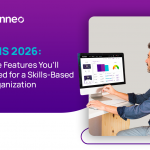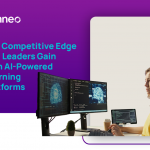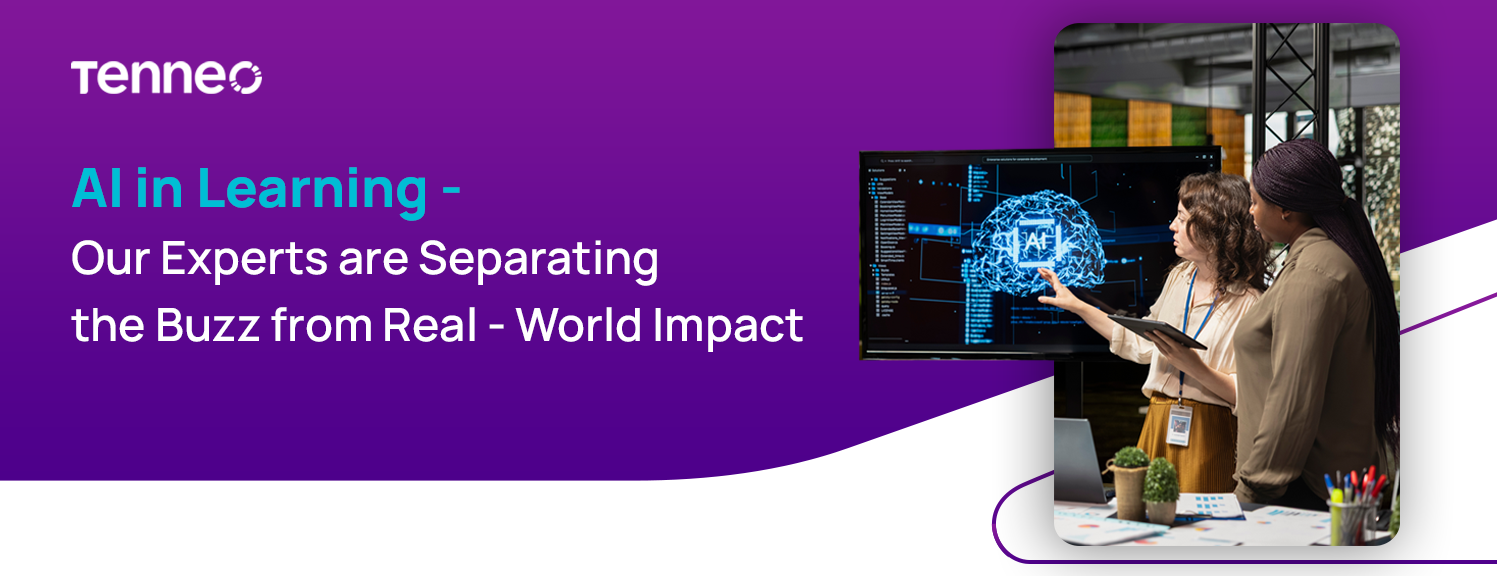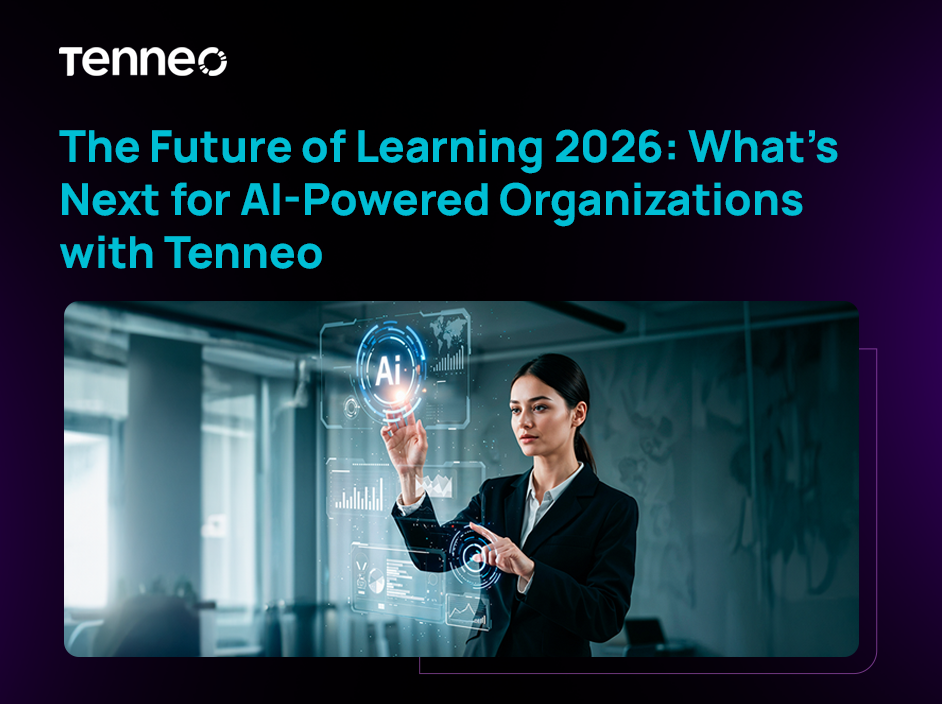
LMS 2026: The Features You’ll Need for a Skills-Based Organization
September 16, 2025
The Competitive Edge L&D Leaders Gain with AI-Powered Learning Platforms
September 29, 2025
LMS 2026: The Features You’ll Need for a Skills-Based Organization
September 16, 2025
The Competitive Edge L&D Leaders Gain with AI-Powered Learning Platforms
September 29, 2025AI in Learning — Our Experts Are Separating the Buzz from Real-World Impact

Today, discussions about AI in learning often swing between hype and caution. At Tenneo, we work where strategy meets action, creating solutions and programs that help our partners build skills and develop their workforce.
From our perspective, one thing is clear: AI isn’t a magic fix. But used wisely, it can turn Learning & Development from a cost center into a real driver of business results.
Here, we break down how AI is transforming learning, with a practical framework for leaders, a roadmap for implementation, and tips on how to govern and measure its impact.
The pragmatic lens: how AI changes the role of learning technology
Think of the modern learning platform as just repositories for courses; they are intelligence layers that connect people, skills, workflows, and business outcomes. AI shifts the platform’s role along three axes:
- Personalization at scale – matching learning paths to job context, prior knowledge, and real-time performance signals.
- Workflow integration – pushing just-in-time learning into tools and processes where work happens.
- Insight & automation – converting learner behavior, assessment, and business metrics into prescriptive actions (recommendations, skills gaps, succession signals).
When leaders reframe platforms this way, they move from “deploy courses” to “shape capability.”
A practical framework Tenneo leaders use to judge AI use cases
We evaluate opportunities across four dimensions – impact, feasibility, trust, and measurability:
- Impact: Will this reduce time-to-competency, increase productivity, reduce errors, or improve retention?
- Feasibility: Do we have the data, integrations, and change appetite?
- Trust: Is the output explainable to learners and managers? Does it respect privacy and fairness?
- Measurability: Can we tie the intervention to leading (engagement, proficiency) and lagging (retention, revenue, safety incidents) indicators?
Only use cases that score well across all four make it into production in our playbook.
Implementation roadmap, from pilot to scale
We recommend a staged, evidence-first approach:
- Discovery – map business pain points, data sources, toolchain, and stakeholder owners.
- Pilot – pick a single high-value use case (clear KPIs), build a lightweight integration, and test with a constrained population.
- Measure & iterate – collect qualitative and quantitative feedback; refine models, content and UX.
- Expand – scale to related teams and regions, while investing in data hygiene and model governance.
- Operationalize – Embed ownership (L&D + HRBP + data team) and automate reporting into leadership rhythms.
Keep pilots short and outcome-oriented — proof of value unlocks funding for scale.
Measuring business impact — what to track
Move beyond vanity metrics. Track a combination of:
- Learning signal metrics – completion, time-to-competency, assessment mastery, repeated practice frequency.
- Operational metrics – time to proficiency, error/incident rates, average handle time, first-call resolution (where applicable).
- Business outcomes – revenue per employee, customer satisfaction, compliance remediation costs, safety incidents.
- Longitudinal talent metrics – retention of high performers, internal mobility rates, leadership readiness.
A/B test interventions where possible; build dashboards that link leading learning signals with lagging business KPIs.
Common pitfalls and how to avoid them
Start with a business problem, choose a narrow use case, prove value, and scale with governance and manager enablement.
- Over-engineering early: Avoid building full ML pipelines before you can validate value. Start with rule-based personalization plus analytics.
- Neglecting integrations: Without workflow integration, even the most brilliant recommendations can be overlooked. Prioritize a few deep integrations (CRM, EHR, code repo, POS).
- Ignoring change management: Managers must be coached to interpret and act on learning insights.
- Treating AI-powered LMS as a substitute for design: Pedagogically sound content and practice remain essential.
Conclusion — from Tenneo leaders to your leadership team
AI is reshaping how organizations upskill, reskill, and drive performance, and AI-powered learning is here to boost your workforce performance. From healthcare and life sciences to finance, retail, manufacturing, and technology, AI delivers personalized, just-in-time learning that reduces errors, accelerates onboarding, and boosts productivity.
Learning platforms have already proven to be the strategic enablers for more innovative corporate teams, faster impact, and measurable business value.
AI will not replace great L&D, but it will change who wins. If you are unsure, Tenneo’s expert team can help map a tailored pilot learning ecosystem tied to one of your highest-impact business outcomes. Connect with our experts.



